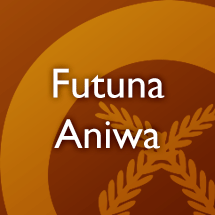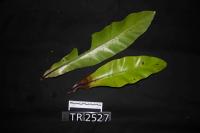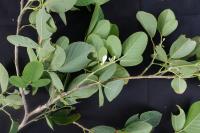Your search for * in plants has returned 100 entries
anonu
n a plant, root is used to make yellow dye
bookmarkeisi ~ esi
n pawpaw, papaya
bookmarkfaka masi
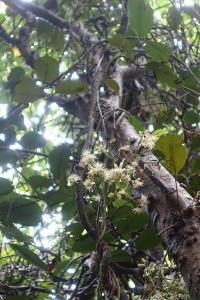
faka tagi gata
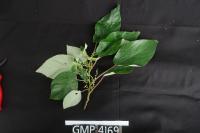
[ɸaka taŋi ŋata] n. tree, 4 m tall (collection: Gregory M. Plunkett #4169)
Example: Peel off the outer portion of the stem, clean it, remove the fibers and dry them in the sun, and then weave into rope for fishing and also to make the net for catching flying fish. Weave into rope for fishing, and also weave this fiber to attach to the frame, used to catch flying fish.
bookmarkfakatangigata
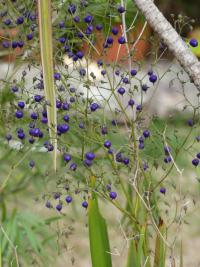
n. type of plant (collection: Michael J. Balick #5228)
Example: Photo by raboul / iNaturalist, License: CC-BY-NC. This plant can "call the snake." Hold the leaf between 2 fingers and pull down along the length of the leaf--it sounds like a snake so the snake comes. (authorities: Naumeta Rose (male, 32), Paul Fatapa (male, 74))
bookmarkfakau sore
fau
n hibiscus tree
bookmarkfau
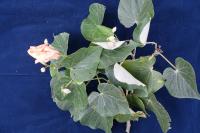
[ɸau] n. type of flowering plant (collection: Michael J. Balick #5054)
Example: Mature stems used for house posts. Take young shoots, strip bark, ret in sea for 1-2 weeks. Take out, separate and clean fiber, dry in sun for 3-4 days. Then weave grass skirt, for women and used ceremonially. In older times, this skirt was used in gardening. Can also use this fiber as handle for Pandanus baskets.
bookmarkfeimama
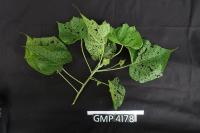
feitama
a the flowers of reeds, breadfruit, and chestnuts
bookmarkfeka
n immature coconut whose husk and meat are still soft
bookmarkfuafa
n fruiting season
bookmarkfuna
n central stalk of a plant or fruit
bookmarkfuna moto
funamoto
n. type of plant (collection: Michael J. Balick #5227)
Example: The stems of this shrub are used as firewood, because they are easy to light when dry. These stems are used for cooking. (authorities: Naumeta Rose (male, 32), Paul Fatapa (male, 74))
bookmarkfutji
n black banana
bookmarkgarakau
n shrubs and herbaceous plants; small plant life
bookmarkgasau
n reed, wild cane
bookmarkgutu manu
n green coconut for drinking
bookmarkhtafugi
n yams cooked and eaten in planting ceremonies
bookmarkhua
n fruit
bookmarkhvao
n husk (of grain in particular)
bookmarkipapao
n empty shell of a fruit
bookmarkkafika
n Malay Apple tree, Rose apple tree
bookmarkkai
n root
bookmarkkaka
n spathe of coconut palm
bookmarkkamkufatu
n common herbaceous flowering plant, Strachytarpheta urticaefolia
bookmarkkamoni
n bean
bookmarkkaumagirasi
n. Tree to 20 m, dbh 4 cm. (collection: Michael J. Balick #5218)
Example: The thin stems of this plant are used to make a fishing rod. (authorities: Naumeta Rose (male, 32), Paul Fatapa (male, 74))
bookmarkkaumajira
n species of giant bamboo
bookmarkko kava
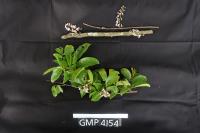
[ko kaʋa] n. liana, growing in well developed secondary forest. flowers pale pink. (collection: Gregory M. Plunkett #4154)
Example: Used as a fish poison. Macerate stems and put into pool with water. Smash further until juice comes out. As a result, fish are stunned and can be harvested.
bookmarkkohkofe
n native cabbage
bookmarkkoka
n. type of plant (collection: Michael J. Balick #5231)
Example: The stem of this tree is good for making house posts as well as used for firewood. The leaves are also used as plates for holding food. (authorities: Naumeta Rose (male, 32), Paul Fatapa (male, 74))
bookmarkkoka sore
n tree sp.
bookmarkkokouri
n. type of plant (collection: Michael J. Balick #5241)
Example: Planted as an ornamental, for shade (authorities: Naumeta Rose (male, 32), Paul Fatapa (male, 74))
bookmarkkoleka
n yam sp.
bookmarkkumaua
n sweet potato
bookmarkmaji ra hgu
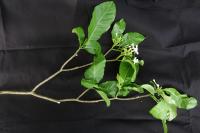
majira
n bamboo
bookmarkmanu
n a cluster of bananas
bookmarkmasaraui
n orange tree
bookmarkmasi
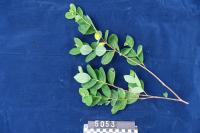
meinu
n cluster of coconuts
bookmarkmori
n tree sp. with inedible spherical fruit
bookmarkmoropake
n. type of plant (collection: Michael J. Balick #5234)
Example: (authorities: Naumeta Rose (male, 32), Paul Fatapa (male, 74), Samuel Seru (male, 31))
bookmarkmota
n. type of plant (collection: Michael J. Balick #5247)
Example: The stem of this tree is used for firewood. (authorities: Naumeta Rose (male, 32), Paul Fatapa (male, 74))
bookmarkmumopil
n plant sp. which can create antidote to poisonous fish spines
bookmarknafara
n sprouted coconut
bookmarknaikiamotu
n. type of plant (collection: Michael J. Balick #5260)
Example: (authorities: Naumeta Rose (male, 32), Paul Fatapa (male, 74))
bookmarknaireakava
n. type of plant (collection: Michael J. Balick #5235)
Example: The stem of this tree is good for firewood. (authorities: Naumeta Rose (male, 32), Paul Fatapa (male, 74), Samuel Seru (male, 31))
bookmarknamase
n a native cabbage
bookmarknamirau
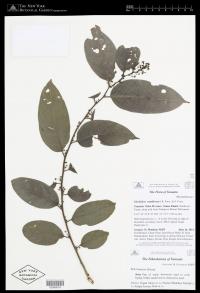
n. type of plant (collection: Michael J. Balick #5273)
Example: Stems of this species are used for house posts and for firewood. (authorities: Naumeta Rose (male, 32), Paul Fatapa (male, 74))
bookmarknamuriri
n mint plant
bookmarknapari
n a native cabbage
bookmarknapasi
n a native cabbage
bookmarknapuk
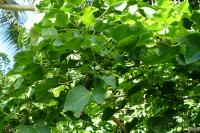
nareci
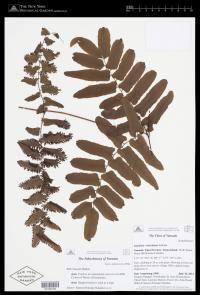
n. type of plant (collection: Michael J. Balick #5223)
Example: This plant is used to make a head decoration for kastom ceremony. (authorities: Naumeta Rose (male, 32), Paul Fatapa (male, 74))
bookmarknarikai
n tree sp. with berry-like fruit from which glue is made
bookmarknarimesa
n vine used for making twine
bookmarknasitau
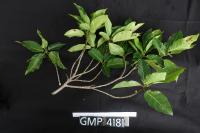
nifo ura
n. Vine to 3 m. (collection: Michael J. Balick #5211)
Example: (authorities: Naumeta Rose (male, 32), Paul Fatapa (male, 74))
bookmarknifou ura
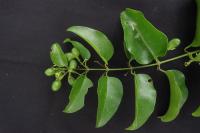
niseni
n a fern
bookmarkniseni maru
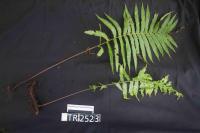
nta
n cluster of bananas
bookmarknumkumo
n stick of sugar cane
bookmarkpakafeina
n coconut spathe
bookmarkpakafeiniu
n stalk of the coconut frond
bookmarkpakehkisi
n green coconut not ready to drink
bookmarkpapa
n walls of wild cane or coconut frond thatch
bookmarkpara
adj spoiled, rotten, overripe
bookmarkparafara
n tree fern
bookmarkpeipai taro
a small taro, just above the ground
bookmarkporo
n. type of plant (collection: Michael J. Balick #5250)
Example: This is an edible plant. Collect the young leaves, boil them in water, discard the water, and add salt and eat. (authorities: Naumeta Rose (male, 32), Paul Fatapa (male, 74))
bookmarkrakauriki
n. type of plant (collection: Michael J. Balick #5245)
Example: The stem is used to make house posts as well as burned for firewood. (authorities: Naumeta Rose (male, 32), Paul Fatapa (male, 74))
bookmarkrapoji
n. type of plant (collection: Michael J. Balick #5276)
Example: This type of Rapoji is the one with the wide leaf. It is grown as an ornamental around households. (authorities: Naumeta Rose (male, 32), Paul Fatapa (male, 74))
bookmarkromaji
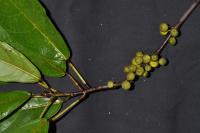
[romaʃi] n. tree, 8 m tall (collection: Gregory M. Plunkett #4182)
Example: The young leaves are edible. Boil them for 30 minutes, and eat. The fruits are also edible and are eaten. Boil fruits 1 hour and eat with coconut. Also, you can wrap the leaves of this plant with Cordyline fruitcosa (MJB 4180) leaves and bake in fire, adding meat as well.
bookmarkronga
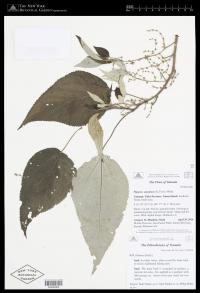
n. type of plant (collection: Michael J. Balick #5230)
Example: Ancient people were said to use this as a fishing line. Strip off the skin (bark) of the stem and place it in the sun to dry. Remove the fiber by stripping it off and weave the fiber into a fishing line. (authorities: Naumeta Rose (male, 32), Paul Fatapa (male, 74))
bookmarktakamurirai
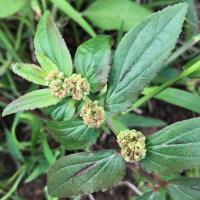
n. type of plant (collection: Michael J. Balick #5262)
Example: Photo by dagendresen / iNaturalist, License: CC0. (authorities: Naumeta Rose (male, 32), Paul Fatapa (male, 74))
bookmarktakirai
n. type of plant (collection: Michael J. Balick #5229)
Example: The stems of this tree are very good for making house posts. The wood from the tree is good for firewood. (authorities: Naumeta Rose (male, 32), Paul Fatapa (male, 74))
bookmarktapi toki
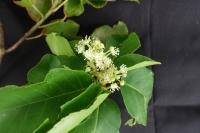
[tapi toki] n. small, densely branched tree (collection: Gregory M. Plunkett #4160)
Example: This plant is used for firewood, as when it is cut green, it will burn quite easily. The can be used to make rafters. It cannot be used as a housepost in the ground, as it will not last long at all.
bookmarktapi toki
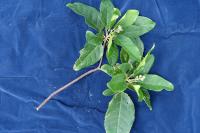
tuhmakei
n. Herb to 1.0 m. (collection: Michael J. Balick #5210)
Example: Name means "strong." This is a plant used to make the children strong, as implied by the local name. For children who are 1-3 years old, take a small branch of Tuhmakei, heat over a fire, and rub on the child’s knees, elbows, and ankles 1x daily for 5 days. Each day use another branch and hang it in a tree such as a coconut where the wind can go through it. this will make the child very strong and be able to walk well. Also used by older men, go give them virility. Take 6 leaves and boil in water 1x daily, drink the liquid and toss the leaves away. (authorities: Naumeta Rose (male, 32), Paul Fatapa (male, 74))
bookmarkvava fofare
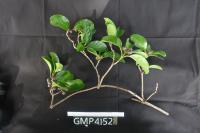
[ʋaʋa ɸoɸare] n. liana climbing in syzygium namoa tree c. 5 m above ground, growing in well developed secondary forest. fruits green to dark purple. (collection: Gregory M. Plunkett #4152)
Example: The vine is used as a rope to ties thing, as it is flexible and strong. Hold the vine over a hot fire then tie it on something while it is still warm. When this vine cools, it is very strong.
bookmarkwowofine
n. type of plant (collection: Michael J. Balick #5244)
Example: Ancient people were said to use this vine to decorate their heads during the Kastom dance. If people decorate their heads with this vine today, they say that the vine is from the God of Matchichiki, Futina and if one wears it, people will know that the person is from Futuna--a form of identity. (authorities: Naumeta Rose (male, 32), Paul Fatapa (male, 74))
bookmark